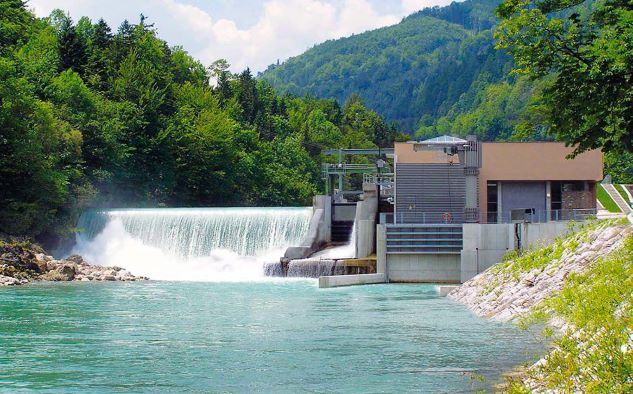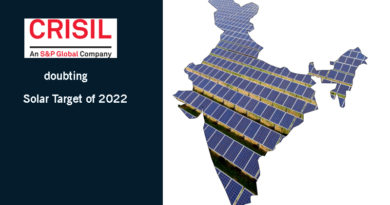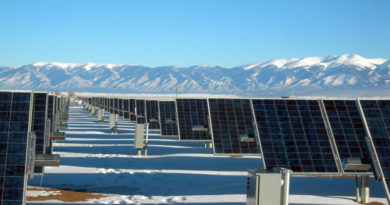Hydropower Projects At Risk From Climate Change
 Hydropower Projects At Risk From Climate Change
Hydropower Projects At Risk From Climate Change
One of the oldest sources of green energy emanating from non-fossil fuel sources-hydro-electric power now faces an imminent threat: Climate Change. Large hydro projects, often touted as a means to mitigate climate change now seems to be a victim of the same.
Studies from the Indian institutions studying climate change and renewable power have hinted towards this linkage. A new research report by the researchers from the Indian Institute of Technology (IIT), Gandhinagar has suggested that the government must consider changes occurring due to climate change while planning new hydropower projects.
The suggestion comes from a study conducted by the team on India’s top 7 hydropower projects suffering hits to power generation due to climate variability in the past six decades. Projected climate change may also hit reservoir operation for power generation from these projects.
According to the study, flow due to snow and glacier melt is projected to decline in the pre-monsoon season as shown for Bhakra Nangal and Nathpa Jhakri projects due to a higher increase in air temperature. Most of the catchments of the large reservoirs are projected to experience substantial warming under the projected future climate.
Why it concerns India?
The lack of generation from India’s hydro power stations might trigger concerns for India which has planned to committed to go net-zero by 2070 and add 500 GW of non-fossil fuel energy capacity which indeed include hydropower. As per the latest data from India’s Power Ministry, India currently has around 193.57 GW of renewable energy capacity (including large hydro projects). The share of hydro projects in this is around 24 percent with a total installed capacity of 47 GW. However when it comes to generation of renewable energy compared to other Variable Renewable Energy (VRE) sources like Solar and Wind, Hydropower is more reliable for India.
For example if we compare the latest annual renewable energy generation data of India, hydro power seems to surpass all other renewable energy forms with the highest generation share of 37.25%. Solar trails behind hydro power in generation with a share of around 32%.

Global concern too
It’s not just the tropics that have to worry about global warming affecting hydropower either. Hydropower-based energy plants in the United States (US) are expected to lose efficiency as well, with states like Montana, Nevada, Texas, Arizona, California, Arkansas and Oklahoma to be amongst the largest casualties due to possibilities of future droughts.
Freak weather conditions triggered by climate change are problems as well extreme weather events like floods and heavy rainfall being fully capable of breaking down dams as seen in Michigan, where two dams collapsed. Thousands of people had to evacuate. The American Society of Civil Engineers recently released a report card that grades different types of infrastructure in the US, and they gave dams a “D,” citing 16,000 aging dams across the U.S. in need of repair.
According to the United States Department of Energy, rising temperatures across dams may lead to increasing water evaporation from hydropower reservoirs, which decreases generation capacity because hydropower depends on a certain level of water supply. By 2050, 61 percent of all global hydropower dams will be in basins with very high or extreme risk for droughts, floods or both. By 2050, 1 in 5 existing hydropower dams will be on high flood risk areas because of climate change, up from 1 in 25 today. Only 2 percent of planned dams are in basins that currently have the highest level of flood risk, but by 2050, nearly 40 percent of this same group of dams will be in basins with the highest flood risk.
Worst Affected Regions
The place worst affected by climate change reducing hydropower’s potential is likely the continent of Africa, with countries like the DRC, Ethiopia, Malawi, Mozambique, Namibia and Zambia requiring it for over 90% of their electricity needs. Three of the largest rivers in the world – the Congo, Zambezi, and Nile – power most of this electrical generating capacity, with even more untapped potential in these rivers attracting much of the focus for future development. The Program for Infrastructure Development (PIDA), endorsed by African leaders in 2012, allocates nearly one-third (US$21 billion) of its priority budget allocation to hydropower.
According to an EEG scoping study in Zambia, the country is extremely sensitive to changes in rainfall. So much so, that a drought in 2014-2015 led to a decline of 50% of the country’s hydroelectric generation. Due to the need to save water, the government had to shut down generating plants and procure emergency power from heavy fuel oil generators stationed on ships off the coast of Mozambique.
The country’s GDP dropped from 6% to a low of 2.6% following the droughts and subsequent blackouts. In 2015 and 2016, Zambia was again severely affected by hydropower shortages, impacting productivity in its copper mining sector. In 2016 there was a deficit of around 600MW against demand, which necessitated expensive imports from the Southern African Power Pool (SAPP) region. If warnings and climate projections are ignored, there is a serious risk of designing infrastructure that is not suitable for the climate of the future.
Smaller countries like Nepal and Pakistan face large-scale blackouts as well if hydropower goes out.
We believe that this represents a tipping point for climate change. If climate change reaches a point at which it actively hampers the technologies that can help prevent it, we won’t have any time left. The doomsday clock must never be allowed to hit zero.




